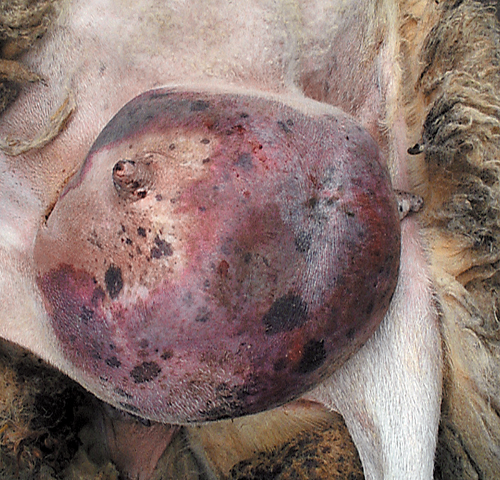Sheep Medicine Q&A 03
| This question was provided by Manson Publishing as part of the OVAL Project. See more Sheep questions |
A two-crop ewe at pasture with month-old twin lambs at foot is found isolated from the remainder of the flock. The ewe appears very stiff and drags the left hindleg. The ewe is profoundly depressed with toxic mucous membranes. The rectal temperature is elevated (40.6°C (105.1°F)). The pulse is increased to 120 beats per minute. The respiratory rate is increased to 45 breaths per minute. There are no ruminal sounds. Examination of the udder reveals extensive gangrenous mastitis of the left gland with subcutaneous oedema extending along the ventral abdominal wall to the brisket.
| Question | Answer | Article | |
| What pathogens could be involved? | Gangrenous mastitis caused by Mannheimia spp. and Staphylococcus aureus occurs sporadically during the first 3 months of lactation associated with poor milk supply related to ewe undernutrition and over vigorous sucking by the lambs.
|
Link to Article | |
| What is the prognosis? | Despite antibiotic and supportive therapy the prognosis is grave, and gangrenous udder tissue eventually sloughs leaving a large granulating surface with superficial bacterial infection. The granulation tissue continues to proliferate over the coming months (up to 10–20 cm diameter). |
Link to Article | |
| What would you recommend? | These ewes are unsuitable for breeding stock. |
Link to Article | |
| What control measures could be adopted? | Control measures include ensuring ewes are well fed. Concentrates should be supplied to ewes and lambs when pasture is poor. No ewe should be expected to rear triplets. Teat lesions should be identified and treated with topical antibiotics. |
Link to Article | |
